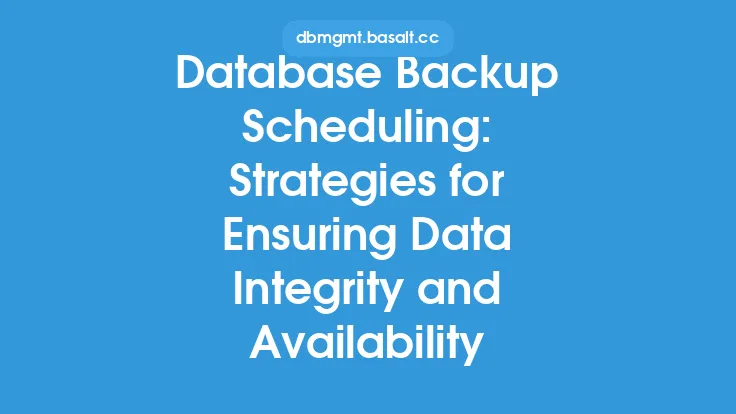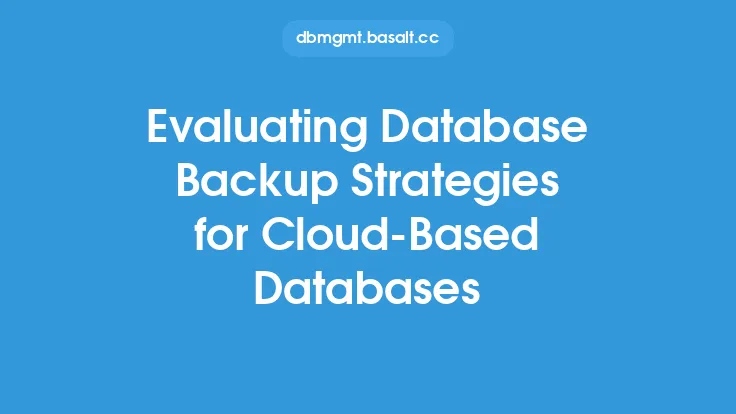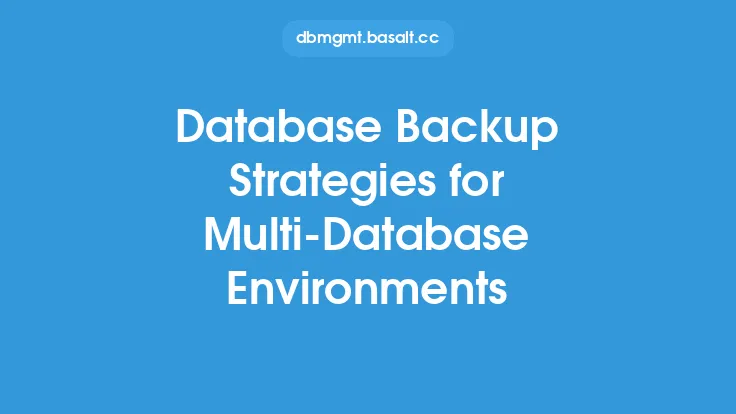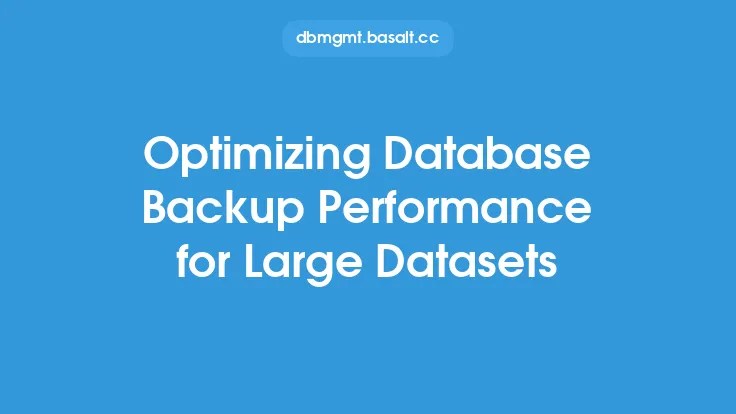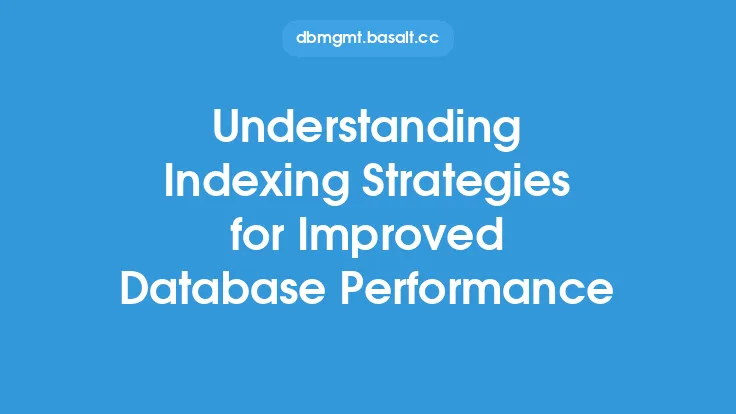Database backup strategies are a crucial aspect of data protection, as they ensure that an organization's data is safe and can be recovered in case of a disaster or data loss. A well-planned database backup strategy provides a safeguard against data corruption, hardware failure, and other unforeseen events that could compromise the integrity of an organization's data. In this article, we will delve into the world of database backup strategies, exploring the different types of backups, backup frequencies, and retention periods, as well as the importance of testing and validating backups.
Types of Database Backups
There are several types of database backups, each with its own strengths and weaknesses. The most common types of backups are full backups, incremental backups, and differential backups. A full backup involves backing up the entire database, including all data, indexes, and other database components. Incremental backups, on the other hand, involve backing up only the data that has changed since the last backup. Differential backups are similar to incremental backups but involve backing up all data that has changed since the last full backup. Each type of backup has its own advantages and disadvantages, and the choice of which type to use depends on the specific needs of the organization.
Backup Frequencies
The frequency of database backups is also an important consideration. The backup frequency will depend on the rate of change of the data, the importance of the data, and the available resources. For example, a database that is updated frequently may require more frequent backups, while a database that is updated infrequently may require less frequent backups. The backup frequency can be daily, weekly, monthly, or quarterly, depending on the specific needs of the organization. It is also important to consider the time of day when backups are performed, as this can impact the performance of the database and other systems.
Retention Periods
The retention period of database backups is also a critical consideration. The retention period refers to the length of time that backups are kept before they are deleted or overwritten. The retention period will depend on the specific needs of the organization, as well as any regulatory or compliance requirements. For example, some organizations may be required to keep backups for a certain period of time for auditing or compliance purposes. The retention period can range from a few days to several years, depending on the specific needs of the organization.
Testing and Validation
Testing and validation of database backups are essential to ensure that the backups are complete and can be recovered in case of a disaster. This involves restoring the backups to a test environment and verifying that the data is accurate and complete. Testing and validation should be performed regularly, such as quarterly or annually, to ensure that the backups are reliable and can be recovered quickly. This is especially important in case of a disaster, where every minute counts, and the ability to recover quickly can mean the difference between success and failure.
Backup Storage
The storage of database backups is also an important consideration. Backups can be stored on-site or off-site, depending on the specific needs of the organization. On-site storage involves storing backups on local devices, such as tape drives or hard drives, while off-site storage involves storing backups in a remote location, such as a cloud storage service. The choice of storage location will depend on the available resources, the size of the backups, and the required level of security. It is also important to consider the media used for backup storage, such as tape, disk, or cloud storage, as each has its own advantages and disadvantages.
Backup Tools and Software
There are many tools and software available for database backup and recovery, each with its own strengths and weaknesses. The choice of tool or software will depend on the specific needs of the organization, as well as the type of database being used. Some popular backup tools and software include database management system (DBMS) built-in tools, third-party backup software, and cloud-based backup services. When choosing a backup tool or software, it is essential to consider factors such as ease of use, performance, and compatibility with the database and other systems.
Best Practices
There are several best practices that organizations can follow to ensure that their database backup strategies are effective. These include developing a comprehensive backup plan, testing and validating backups regularly, storing backups in a secure location, and monitoring backup performance. It is also essential to consider the 3-2-1 rule, which involves having at least three copies of the data, storing the copies on at least two different types of media, and storing one copy off-site. By following these best practices, organizations can ensure that their data is protected and can be recovered quickly in case of a disaster.
Conclusion
In conclusion, database backup strategies are a critical aspect of data protection, and organizations must carefully consider their backup strategies to ensure that their data is safe and can be recovered in case of a disaster. By understanding the different types of backups, backup frequencies, and retention periods, as well as the importance of testing and validation, organizations can develop a comprehensive backup plan that meets their specific needs. Additionally, by following best practices and considering factors such as backup storage, tools, and software, organizations can ensure that their data is protected and can be recovered quickly, minimizing downtime and ensuring business continuity.
